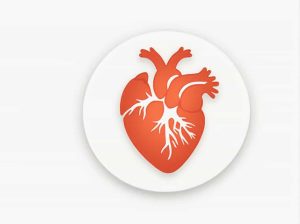DNA the blueprint of life contains four nitrogenous bases that form specific base pairs ensuring genetic stability and accurate replication. One of these key pairings is adenine (A) with thymine (T). This specific pairing is crucial for maintaining the integrity of genetic information.
In this topic we will explore the role of adenine its pairing with thymine the molecular basis of this interaction and its significance in DNA replication and genetic stability.
Understanding DNA and Nitrogenous Bases
DNA (deoxyribonucleic acid) is composed of nucleotides each containing three components:
- A phosphate group
- A deoxyribose sugar
- A nitrogenous base
There are four nitrogenous bases in DNA:
- Adenine (A)
- Thymine (T)
- Cytosine (C)
- Guanine (G)
These bases form complementary base pairs through hydrogen bonding:
- Adenine (A) pairs with Thymine (T)
- Cytosine (C) pairs with Guanine (G)
Adenine and Thymine: A Perfect Pair
Adenine and thymine are connected by two hydrogen bonds making their pairing stable but flexible enough for DNA functions like replication and transcription.
Why Does Adenine Pair with Thymine?
The specific pairing between adenine and thymine follows Chargaff’s Rule which states that the amount of adenine in a DNA molecule is always equal to the amount of thymine. This occurs because of:
- Hydrogen Bonding Specificity – Adenine forms exactly two hydrogen bonds with thymine ensuring a stable but separable bond during DNA processes.
- Size Compatibility – Adenine (a purine) is larger while thymine (a pyrimidine) is smaller. Their pairing maintains a uniform DNA helix structure.
- Genetic Fidelity – Specific base pairing ensures that DNA replication and transcription are accurate reducing errors.
The Role of Adenine-Thymine Pairing in DNA Replication
DNA replication is a crucial biological process where cells duplicate their genetic material before division. The adenine-thymine pairing plays a vital role in this process.
Steps in DNA Replication Involving A-T Pairing
- Unwinding of DNA – The enzyme helicase breaks the hydrogen bonds between base pairs separating the DNA strands.
- Complementary Base Pairing – Each single strand serves as a template. Free nucleotides pair with their complementary bases: adenine pairs with thymine.
- Formation of New DNA Strands – The enzyme DNA polymerase adds new nucleotides forming two identical DNA molecules.
Importance of Adenine-Thymine Pairing in Replication
- Ensures accurate genetic information transfer.
- Maintains DNA structure and stability.
- Prevents mutations and genetic disorders.
Mutations Involving Adenine and Thymine
Sometimes errors occur in DNA replication leading to mutations. Some common mutations involving adenine-thymine pairs include:
1. Point Mutations
- Substitution: Adenine is mistakenly replaced by cytosine or guanine altering the DNA sequence.
- Effects: Can lead to genetic disorders or changes in protein function.
2. Thymine Dimers (UV Damage)
- Cause: Exposure to UV radiation can cause two thymine bases to bind together abnormally.
- Effects: Can disrupt DNA replication and lead to skin cancer (e.g. melanoma).
3. Base Pair Deletions and Insertions
- Deletion: A missing adenine-thymine pair can shift the DNA reading frame leading to protein malfunctions.
- Insertion: Extra base pairs can cause genetic defects.
The Role of Adenine-Thymine Pairing in Transcription
DNA not only stores genetic information but also plays a role in protein synthesis through transcription. During this process DNA is transcribed into messenger RNA (mRNA).
How A-T Pairing Affects Transcription
- DNA Unzipping: RNA polymerase binds to the DNA and separates the strands.
- Base Pairing in mRNA Formation:
- Instead of thymine RNA contains uracil (U).
- Adenine in DNA pairs with uracil in RNA (A-U pairing).
- mRNA is Formed: The completed mRNA strand carries genetic instructions to the ribosome for protein synthesis.
Differences Between Adenine-Thymine and Cytosine-Guanine Pairing
While both A-T and C-G pairs are essential for DNA structure they have some key differences:
| Feature | Adenine-Thymine (A-T) | Cytosine-Guanine (C-G) |
|---|---|---|
| Hydrogen Bonds | 2 bonds | 3 bonds |
| Bond Strength | Weaker easier to separate | Stronger more stable |
| Function in DNA Replication | Facilitates DNA strand separation | Provides structural stability |
Biological Significance of Adenine-Thymine Pairing
The correct pairing of adenine and thymine ensures:
- Stable DNA structure – Prevents deformities in the double helix.
- Accurate genetic coding – Essential for protein synthesis.
- Efficient replication – Enables fast and precise DNA copying.
Adenine is the nitrogenous base that pairs with thymine forming a crucial part of the DNA double helix. This specific pairing stabilized by hydrogen bonds ensures genetic stability accurate DNA replication and proper transcription.
Understanding the importance of adenine-thymine pairing helps us appreciate the intricacies of genetic information transfer and how mutations in these bases can lead to genetic disorders. By studying these mechanisms scientists continue to uncover new insights into genetics disease prevention and DNA repair.



